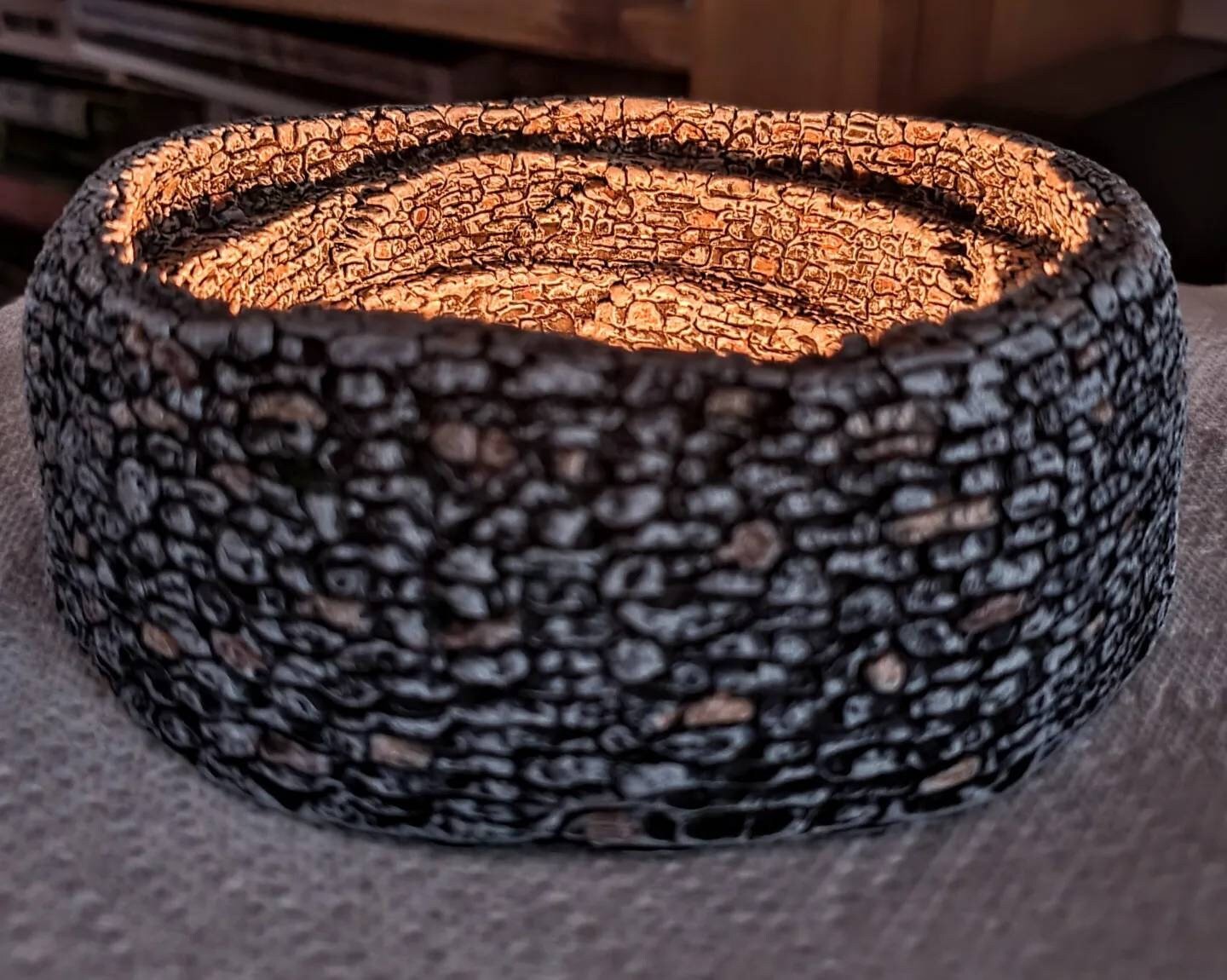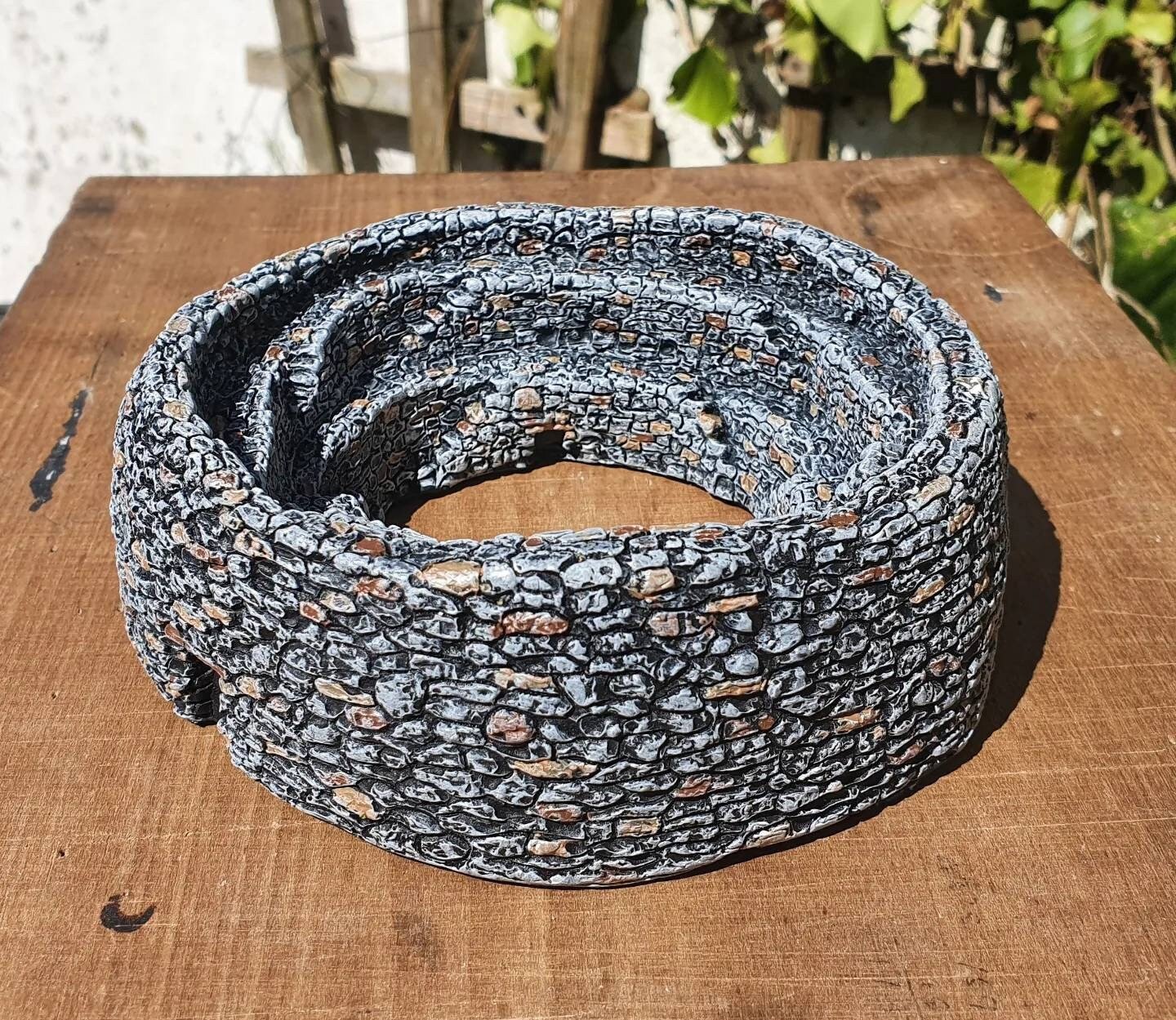An Grianán of Aileach,
Dimensions: 6” across at base, 2” high.
A highly detailed, handcrafted plasterwork Grianán of Aileach piece, lovingly made in the heart of Derry from locally sourced materials. This little treasure also doubles as a fantastically detailed tealight holder, just light a candle within in a dimmed room and be captivated by the intricate stonework that bursts to life! I create these unique pieces with the aim of highlighting the incredibly rich heritage of ancient Ireland, with a particular interest in my own backyard of Donegal. I have a background in model making and sculpting and have tried to recreate the majesty of our heritage sites as faithfully as possible, with each being completely created and painted by my own hands. These are the beginning of a range I am creating to showcase the lesser known hidden gems of Irish heritage, bringing pieces of ancient Ireland into people's homes. Created using locally sourced paints and plaster, I pride myself on delivering a piece that is totally unique and holds up to close inspection and scrutiny. An Grianán is visible from my house and has been a part of my life for as long as I can remember, I am so happy to be able to create these pieces and share my love for the site with others of the same mind. These pieces look, feel and weigh like genuine stone, you will not find these available anywhere else on Earth!
The origins of the Grianán of Aileach fort are dated back to 1700 BC. It is linked to the Tuatha de Danann who invaded Ireland before the Celts and built stone forts on top of strategic hills. They worshipped Dagda (the Good God) and he too is associated with the origins of Aileach. It was he who ordered the building of a stone fort to act as a burial monument to his dead son.
The round fort is built largely without mortar. The interior has three terraces and wooden structures were built against the terraces to provide accommodation. The outline of Bronze Age or Iron Age ramparts can be seen below the fort. Legend states that the giants of Inishowen are lying sleeping but when the sacred sword is removed they will spring to life reclaiming their ancient lands.
It is thought that St Patrick visited the site in the 5th century and baptised the local chieftain, Eoghan (from whom Inis Eoghan gets its name), here.
- Courtesy of Discover Ireland
Dimensions: 6” across at base, 2” high.
A highly detailed, handcrafted plasterwork Grianán of Aileach piece, lovingly made in the heart of Derry from locally sourced materials. This little treasure also doubles as a fantastically detailed tealight holder, just light a candle within in a dimmed room and be captivated by the intricate stonework that bursts to life! I create these unique pieces with the aim of highlighting the incredibly rich heritage of ancient Ireland, with a particular interest in my own backyard of Donegal. I have a background in model making and sculpting and have tried to recreate the majesty of our heritage sites as faithfully as possible, with each being completely created and painted by my own hands. These are the beginning of a range I am creating to showcase the lesser known hidden gems of Irish heritage, bringing pieces of ancient Ireland into people's homes. Created using locally sourced paints and plaster, I pride myself on delivering a piece that is totally unique and holds up to close inspection and scrutiny. An Grianán is visible from my house and has been a part of my life for as long as I can remember, I am so happy to be able to create these pieces and share my love for the site with others of the same mind. These pieces look, feel and weigh like genuine stone, you will not find these available anywhere else on Earth!
The origins of the Grianán of Aileach fort are dated back to 1700 BC. It is linked to the Tuatha de Danann who invaded Ireland before the Celts and built stone forts on top of strategic hills. They worshipped Dagda (the Good God) and he too is associated with the origins of Aileach. It was he who ordered the building of a stone fort to act as a burial monument to his dead son.
The round fort is built largely without mortar. The interior has three terraces and wooden structures were built against the terraces to provide accommodation. The outline of Bronze Age or Iron Age ramparts can be seen below the fort. Legend states that the giants of Inishowen are lying sleeping but when the sacred sword is removed they will spring to life reclaiming their ancient lands.
It is thought that St Patrick visited the site in the 5th century and baptised the local chieftain, Eoghan (from whom Inis Eoghan gets its name), here.
- Courtesy of Discover Ireland
Dimensions 6” across, 3” high
FREE SHIPPING WORLDWIDE





